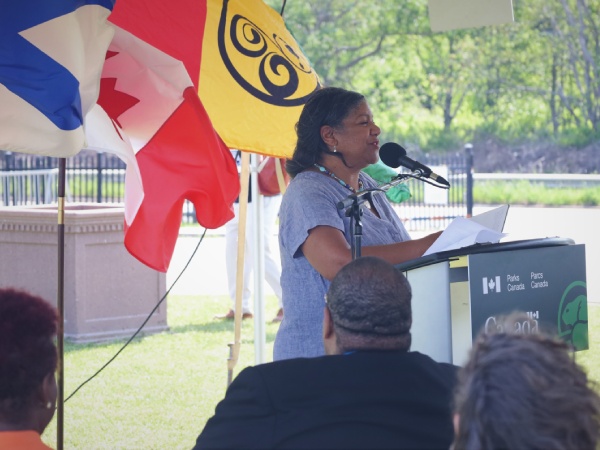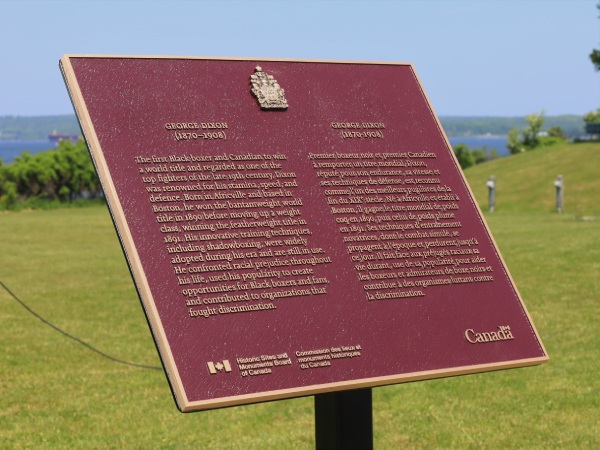George Dixon National Historic Person (1870-1908)
George Dixon was designated as a national historic person in 2021.
Historical importance: One of the top boxers of the late 19th century.
Commemorative plaque: Africville Museum, 5795 Africville Road, Halifax, Nova ScotiaFootnote 1
George Dixon (1870-1908)
The first Black boxer and Canadian to win a world title and regarded as one of the top fighters of the late 19th century, Dixon was renowned for his stamina, speed, and defence. Born in Africville and based in Boston, he won the bantamweight world title in 1890 before moving up a weight class, winning the featherweight title in 1891. His innovative training techniques, including shadowboxing, were widely adopted during his era and are still in use. He confronted racial prejudice throughout his life, used his popularity to create opportunities for Black boxers and fans, and contributed to organizations that fought discrimination.
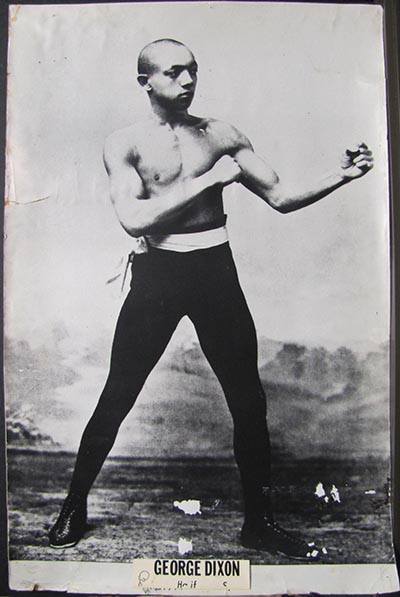
© Photo courtesy of the Nova Scotia Sport Hall of Fame
George Dixon (1870-1908)
Widely regarded as one of the top fighters of the late 19th century, George Dixon was renowned for his stamina, speed, and defence, and was the first Black boxer and first Canadian to win a world title. Born in Africville, Halifax, and competing primarily out of the boxing hub of Boston as a bantamweight and featherweight, he became the first fighter to win world titles at multiple weight classes and the first to have multiple reigns with a world title. His innovative training techniques, including shadowboxing, improved in-ring performance. Dixon’s technical approach was widely adopted among boxers of his era and remains central to training regimens of modern boxers. He confronted racial prejudice throughout his life and career, using his platform as world champion to create opportunities for Black boxers and Black boxing fans and regularly used his in-ring earnings to contribute to causes combating discrimination.
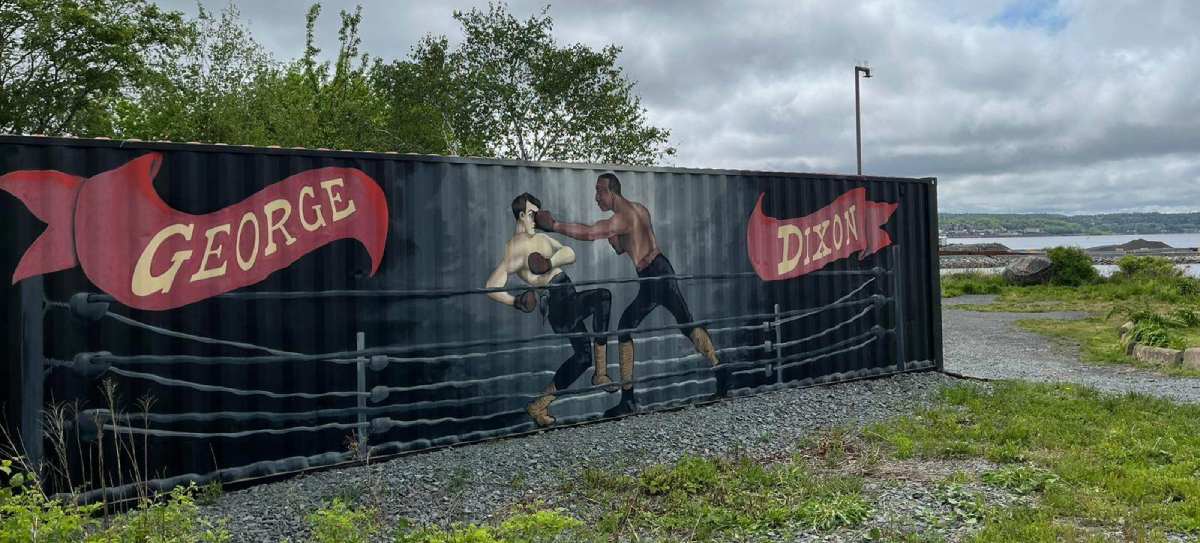
© Isabel Luce, Parks Canada
Early years as a boxer
Dixon started his boxing training after moving with his family to Boston, Massachusetts. Those around him noticed his natural skill, which included fast feet, a remarkable ability to bob and weave, and incredibly quick hands, all of which made him a very effective defensive fighter. Not the most physically-imposing boxer—he was 5’4” and weighed between 87 and 115 pounds while an active fighter—he used these skills to launch his career.
From Halifax to England
His first official fight was in 1886 in Halifax, where he knocked out Young Johnson. After fighting exclusively in Boston for the next four years, he travelled to England in 1890 where he knocked out Nunc Wallace in the 18th round to win the world bantamweight title. With this victory, he became the first Black boxer to win a world title at any weight class. Dixon, who competed primarily in the United States, confronted racism throughout his career, but used his popularity to challenge discrimination. For instance, he regularly got promoters of his fights to reserve seats for Black fans, a practice which was unheard of at the time.
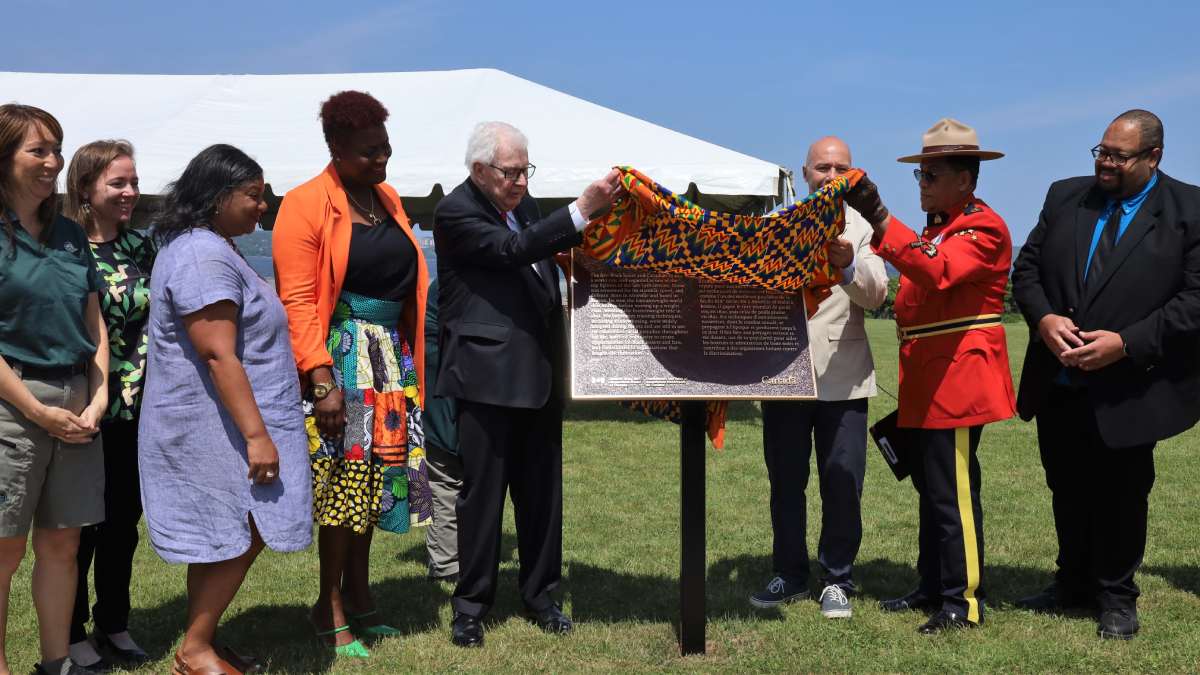
© Kate Solar, Parks Canada
World featherweight title
He resigned the bantamweight championship after defending it only once so that he could move up a weight-class. In the early 1890s, he captured the world featherweight title, in the process becoming the first boxer to hold world titles in two different weight categories. He would have three separate reigns as featherweight champion, making him the first fighter to lose and a regain a title.
Shadowboxing
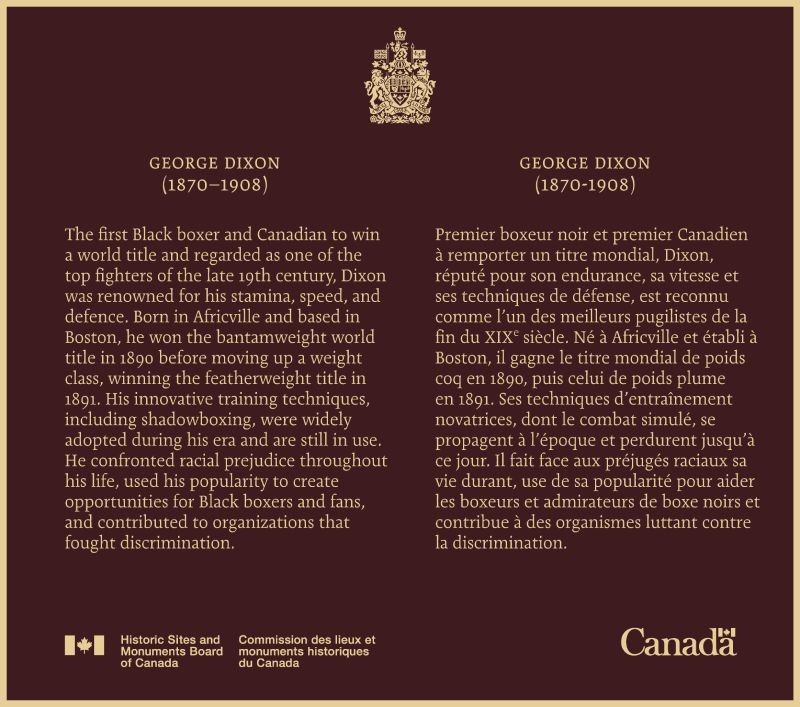
Outside the ring, Dixon was known for his innovative training style. His 1893 A Lesson on Boxing outlined many of his strategies, which included using hand weights, a speed bag attached to the floor to improve footwork, and hitting a heavy bag. Arguably his most important innovation, though, was shadowboxing. This technique involves punching and dodging an imaginary opponent, which both builds muscle and recreates fight conditions when training alone. Widely used by future generations, shadowboxing represented a significant innovation to the training regimen of boxers.
Dixon’s last fight was in 1906. He died in Bellevue Hospital in New York City on 6 January 1908. Still a revered figure within boxing at the time of his death, the local New York City boxing community organized a fundraiser to pay his hospital bills and arranged for his body to be interred in Boston’s Mount Hope Cemetery.
Backgrounder last update: 2023-05-02
The National Program of Historical Commemoration relies on the participation of Canadians in the identification of places, events and persons of national historic significance. Any member of the public can nominate a topic for consideration by the Historic Sites and Monuments Board of Canada.
- Date modified :
